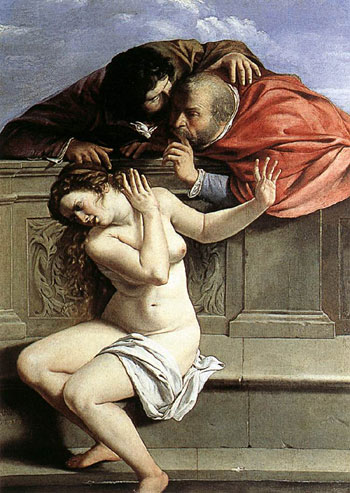
Click to Enlarge
Susanna and the Elders, a 17th-century Italian painting by Artemisia Gentileschi, portrays the biblical story of Susanna, a virtuous Jewish woman preyed upon by two judges, important members of the community. Without her knowing, the men spied on her while she bathed. Overcome with lust, they cornered her, offering a bargain: she could either sleep with them or they would claim to have seen her lying with a young man. Her refusal condemned her to death by stoning. However, she was saved by divine intervention, and the judges were put to death instead.
Susanna’s story was used throughout medieval Europe to teach that salvation comes to those who put their trust in God. However, Artemisia Gentileschi, one of a very few female artists of her time, used the story to stress instead the dark nature of men. Raped—or seduced with the promise of marriage—by her painting teacher, Artemisia was made to stand trial against him, being tortured to ensure that she was telling the truth. In the early modern period, suing for rape was more than once used to force the hand of a reluctant suitor. Often, the punishment for rape was marriage to the victim—as a way of restoring her lost reputation and virtue.
Source: Gentileschi, Artemisia. Susanna and the Elders. Schloss Weissenstein, Pommersfelden, Germany, 1610. http://gallery.euroweb.hu/html/g/gentiles/artemisi/susanna.html.